2流高手速成记(之五):Springboot整合Shiro实现安全管理
废话不多说,咱们直接接上回
上一篇我们讲了如何使用Springboot框架整合Nosql,并于文章最后部分引入了服务端Session的概念
而早在上上一篇中,我们则已经讲到了如何使用Springboot框架整合Mybatis/MybatisPlus实现业务数据的持久化(写入数据库)
本篇我们把关注点放在一个于这两部分有共同交集的内容——安全管理,并且引入我们今天的主角——Shiro框架
Apache Shiro是一个强大且易用的Java安全框架,执行身份验证、授权、密码和会话管理。使用Shiro的易于理解的API,您可以快速、轻松地获得任何应用程序,从最小的移动应用程序到最大的网络和企业应用程序。
—— 来自百度百科
Shiro框架包含三个核心组件:
Subject —— 泛指当前与Shiro交互中的实体,可以是用户或者某后台进程
SecurityManager —— Shiro的核心组件,对内管理各种组件实例,对外提供各种安全服务
Realm —— Shiro与安全数据之间的桥接器
Shiro框架还包含有其他诸多概念,为降低大家的心智负担,这些我们暂且不谈,文末会给大家推荐延展阅读的相关文章
还是老规矩直接上干货,以完整的实例让大家对【如何基于Shiro实现权限的细粒度控制】有一个整体上的认知

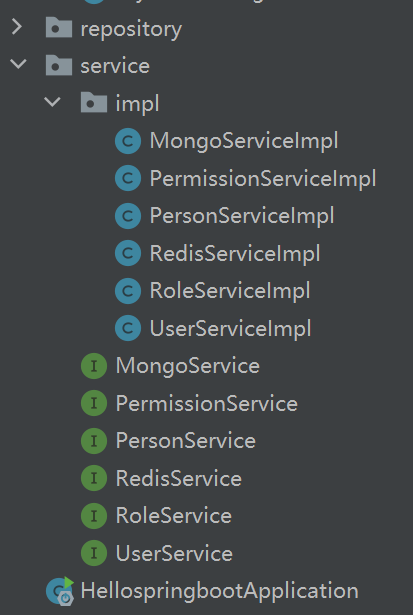
不知道大家会不会觉得项目结构突然变复杂?别担心,接下来我会给大家逐一拆解
1. 创建数据表
首先是角色表——role
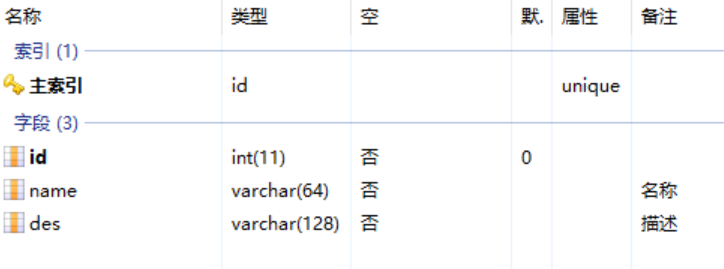

然后是用户表——user


最后是权限表——permission


2. 创建三个对应的Mapper
package com.example.hellospringboot.mapper; import com.baomidou.mybatisplus.core.mapper.BaseMapper;
import com.example.hellospringboot.model.Role;
import org.apache.ibatis.annotations.Mapper;
import org.springframework.stereotype.Repository; @Mapper
@Repository
public interface RoleMapper extends BaseMapper<Role> {
}
package com.example.hellospringboot.mapper; import com.baomidou.mybatisplus.core.mapper.BaseMapper;
import com.example.hellospringboot.model.User;
import org.apache.ibatis.annotations.Mapper;
import org.springframework.stereotype.Repository; @Mapper
@Repository
public interface UserMapper extends BaseMapper<User> {
}
package com.example.hellospringboot.mapper; import com.baomidou.mybatisplus.core.mapper.BaseMapper;
import com.example.hellospringboot.model.Permission;
import org.apache.ibatis.annotations.Mapper;
import org.springframework.stereotype.Repository; @Mapper
@Repository
public interface PermissionMapper extends BaseMapper<Permission> {
}
这里我们用到了上上一节讲到的内容
这里的Mapper会辅助于后续的安全数据读取
3. 接下来是Service及其实现类
package com.example.hellospringboot.service;
import com.example.hellospringboot.model.Role;
public interface RoleService {
Role findRoleById(int id);
}
package com.example.hellospringboot.service.impl; import com.example.hellospringboot.mapper.RoleMapper;
import com.example.hellospringboot.model.Role;
import com.example.hellospringboot.service.RoleService;
import org.springframework.beans.factory.annotation.Autowired;
import org.springframework.stereotype.Service; @Service
public class RoleServiceImpl implements RoleService { @Autowired
RoleMapper mapper; public Role findRoleById(int id){
Role role = mapper.selectById(id);
return role;
}
}
package com.example.hellospringboot.service;
import com.example.hellospringboot.model.User;
public interface UserService {
boolean checkUserByUsernameAndPassword(String userName, String passWord);
User findUserByUserName(String userName);
}
package com.example.hellospringboot.service.impl; import com.baomidou.mybatisplus.core.conditions.query.QueryWrapper;
import com.example.hellospringboot.mapper.UserMapper;
import com.example.hellospringboot.model.User;
import com.example.hellospringboot.service.UserService;
import org.springframework.beans.factory.annotation.Autowired;
import org.springframework.stereotype.Service; import java.util.List; @Service
public class UserServiceImpl implements UserService { @Autowired
UserMapper mapper; public boolean checkUserByUsernameAndPassword(String userName, String passWord){
QueryWrapper<User> wrapper = new QueryWrapper<User>();
wrapper = wrapper.eq("user_name", userName).eq("pass_word",passWord);
List<User> userList = mapper.selectList(wrapper);
return userList.size() > 0;
} public User findUserByUserName(String userName){
QueryWrapper<User> wrapper = new QueryWrapper<User>();
wrapper = wrapper.eq("user_name", userName);
User user = mapper.selectOne(wrapper);
return user;
} }
package com.example.hellospringboot.service;
import com.example.hellospringboot.model.Permission;
import java.util.List;
public interface PermissionService {
List<Permission> findPermissionsByRoleId(int roleId);
}
package com.example.hellospringboot.service.impl; import com.baomidou.mybatisplus.core.conditions.Wrapper;
import com.baomidou.mybatisplus.core.conditions.query.QueryWrapper;
import com.example.hellospringboot.mapper.PermissionMapper;
import com.example.hellospringboot.model.Permission;
import com.example.hellospringboot.service.PermissionService;
import org.springframework.beans.factory.annotation.Autowired;
import org.springframework.stereotype.Service; import java.util.List; @Service
public class PermissionServiceImpl implements PermissionService { @Autowired
PermissionMapper mapper; public List<Permission> findPermissionsByRoleId(int roleId){
QueryWrapper<Permission> wrapper = new QueryWrapper<>();
wrapper = wrapper.eq("role_id", roleId);
List<Permission> list = mapper.selectList(wrapper);
return list;
} }
ok,我们已经准备好了所有的安全数据,及对应的读取方法
到这里,我们就算是做好了所有的准备工作
接下来看我们如何通过Shiro框架来运用这些已经装配好的枪炮子弹
4. 引入Shiro框架相关依赖(pom.xml)
<!-- 引入shiro框架依赖 -->
<dependency>
<groupId>org.apache.shiro</groupId>
<artifactId>shiro-spring</artifactId>
<version>1.10.0</version>
</dependency>
这次pom.xml终于不是第一步了,哈哈哈。。。
5. 创建Realm嫁接Shiro框架及安全数据(realm/MyAuthorizingRealm)
package com.example.hellospringboot.realm; import com.example.hellospringboot.model.Permission;
import com.example.hellospringboot.model.Role;
import com.example.hellospringboot.model.User;
import com.example.hellospringboot.service.PermissionService;
import com.example.hellospringboot.service.RoleService;
import com.example.hellospringboot.service.UserService;
import org.apache.shiro.authc.*;
import org.apache.shiro.authz.AuthorizationInfo;
import org.apache.shiro.authz.SimpleAuthorizationInfo;
import org.apache.shiro.realm.AuthorizingRealm;
import org.apache.shiro.subject.PrincipalCollection;
import org.springframework.beans.factory.annotation.Autowired; import java.util.HashSet;
import java.util.List;
import java.util.Set; public class MyAuthorizingRealm extends AuthorizingRealm { @Autowired
UserService userService; @Autowired
RoleService roleService; @Autowired
PermissionService permissionService; @Override
protected AuthenticationInfo doGetAuthenticationInfo(AuthenticationToken authenticationToken) {
UsernamePasswordToken token = (UsernamePasswordToken) authenticationToken;
String userName = token.getUsername();
String passWord = String.valueOf(token.getPassword());
if (!userService.checkUserByUsernameAndPassword(userName, passWord)) {//判断用户账号是否正确
throw new UnknownAccountException("用户名或密码错误!");
}
return new SimpleAuthenticationInfo(userName, passWord, getName());
} @Override
protected AuthorizationInfo doGetAuthorizationInfo(PrincipalCollection principalCollection) {
SimpleAuthorizationInfo info = new SimpleAuthorizationInfo();
String userName = principalCollection.getPrimaryPrincipal().toString();
User user = userService.findUserByUserName(userName);
if (user == null) {
throw new UnknownAccountException("用户名或密码错误!");
}
List<Integer> rolesList = user.rolesList();
Set<String> roles = new HashSet<>();
Set<String> permissions = new HashSet<>();
for (Integer roleId : rolesList) {
Role role = roleService.findRoleById(roleId);
roles.add(role.getName());
List<Permission> permissionList = permissionService.findPermissionsByRoleId(roleId);
for (Permission permission : permissionList) {
permissions.add(permission.getName());
}
}
info.setRoles(roles);
info.setStringPermissions(permissions);
return info;
}
}
Realm的创建对于整个Shiro安全验证体系搭建而言是至关重要的一步!
其中两个抽象方法
doGetAuthenticationInfo —— 用于校验用户名及密码的合法性
doGetAuthorizationInfo —— 用于赋予实体对应的角色及交互权限
6. 测试用Controller创建
package com.example.hellospringboot.controller; import org.apache.shiro.SecurityUtils;
import org.apache.shiro.authc.AuthenticationException;
import org.apache.shiro.authc.UsernamePasswordToken;
import org.apache.shiro.subject.Subject;
import org.springframework.web.bind.annotation.GetMapping;
import org.springframework.web.bind.annotation.PostMapping;
import org.springframework.web.bind.annotation.RequestMapping;
import org.springframework.web.bind.annotation.RestController; @RequestMapping("/user")
@RestController
public class UserController { @PostMapping("/login")
public String login(String user, String pass) {
UsernamePasswordToken token = new UsernamePasswordToken(user, pass);
Subject subject = SecurityUtils.getSubject();
if(!subject.isAuthenticated()) {
try {
subject.login(token);
} catch (AuthenticationException e) {
return e.getMessage();
}
}
return "ok";
} @PostMapping("/logout")
public String logout(){
Subject subject = SecurityUtils.getSubject();
if(subject.isAuthenticated()) {
try {
subject.logout();
} catch (AuthenticationException e) {
return e.getMessage();
}
}
return "ok";
} @GetMapping("/admin")
public String admin() {
return "admin";
} @GetMapping("/user")
public String user() {
return "user";
} }
内容很简单:
login——登录方法
logout——登出方法
admin、user——两个测试方法,用于测试不同角色对于不同方法可访问的细粒度控制
7. ShiroConfig配置类创建,实现用户访问权限的细粒度控制
package com.example.hellospringboot.configure; import com.example.hellospringboot.realm.MyAuthorizingRealm;
import org.apache.shiro.mgt.SecurityManager;
import org.apache.shiro.realm.Realm;
import org.apache.shiro.spring.web.ShiroFilterFactoryBean;
import org.apache.shiro.web.mgt.DefaultWebSecurityManager;
import org.springframework.context.annotation.Bean;
import org.springframework.context.annotation.Configuration; import java.util.LinkedHashMap;
import java.util.Map; @Configuration
public class ShiroConfig { @Bean
public SecurityManager securityManager(Realm realm) {
DefaultWebSecurityManager securityManager = new DefaultWebSecurityManager();
securityManager.setRealm(realm);
return securityManager;
} @Bean
public MyAuthorizingRealm getRealm() {
MyAuthorizingRealm realm = new MyAuthorizingRealm();
return realm;
} @Bean
public ShiroFilterFactoryBean shiroFilterFactoryBean(SecurityManager securityManager) {
ShiroFilterFactoryBean shiroFilter = new ShiroFilterFactoryBean();
shiroFilter.setSecurityManager(securityManager);
Map<String, String> filterChainMap = new LinkedHashMap<String, String>();
filterChainMap.put("/user/login", "anon");
filterChainMap.put("/user/logout", "anon");
filterChainMap.put("/user/admin", "authc,roles[admin],perms[admin:read]");
filterChainMap.put("/user/user", "authc,roles[user],perms[user:read]");
shiroFilter.setFilterChainDefinitionMap(filterChainMap);
return shiroFilter;
}
}
securityManager 和 getRealm 显示指定了Shiro两大组件的实例声明
shiroFilterFactoryBean 则是实现角色访问权限控制的重要方法
filterChainMap.put("/user/login", "anon"); // 代表login方法可以匿名访问
filterChainMap.put("/user/logout", "anon"); // 代表logout方法可以匿名访问
filterChainMap.put("/user/admin", "authc,roles[admin],perms[admin:read]"); // 代表admin方法需要用户满足admin角色,同时具备admin:read权限
filterChainMap.put("/user/user", "authc,roles[user],perms[user:read]"); // 代表user方法需要用户满足user角色,同时具备user:read权限
至此,整个接入流程便结束了
我们再次结合最开始我们配置的数据来对业务逻辑进行分析
用户 admin,同时具备admin、user两种角色
用户 juste,仅具备user一种角色
角色 admin,同时具备admin:write、admin:read两种权限
角色 user,同时具备user:write、user:read两种权限
因此
用户 admin,同时具备admin:write、admin:read、user:write、user:read 四种操作权限
用户 juste,同时具备user:write、user:read两种操作权限
大家理清楚这其中的关系了吗?^ ^
8. 执行Postman验证结果
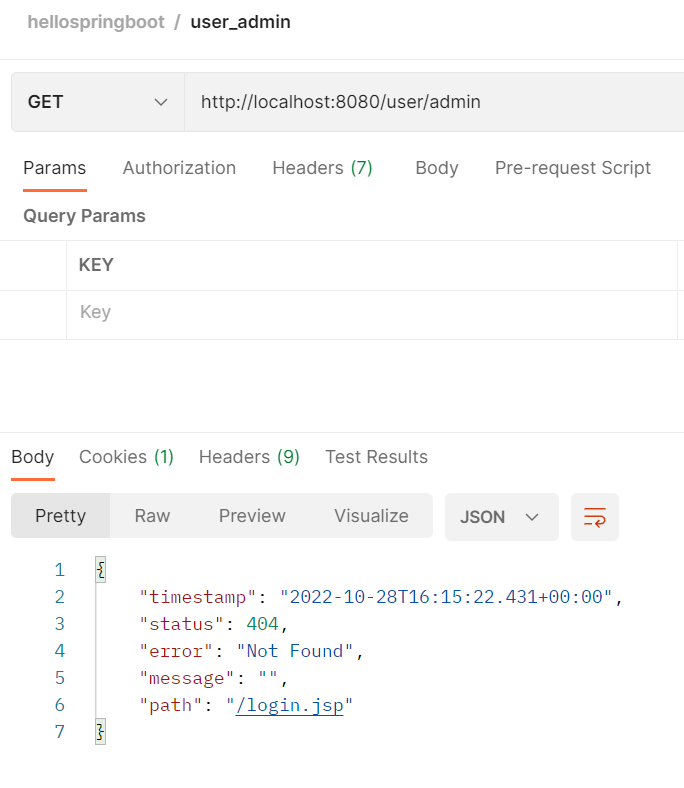
我们在执行login之前,admin方法无权访问
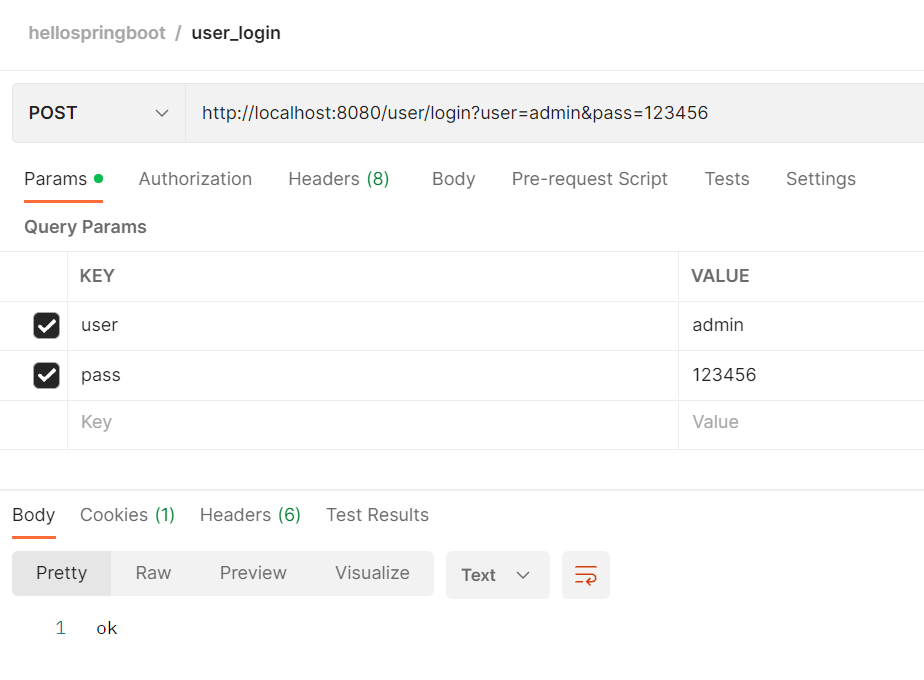

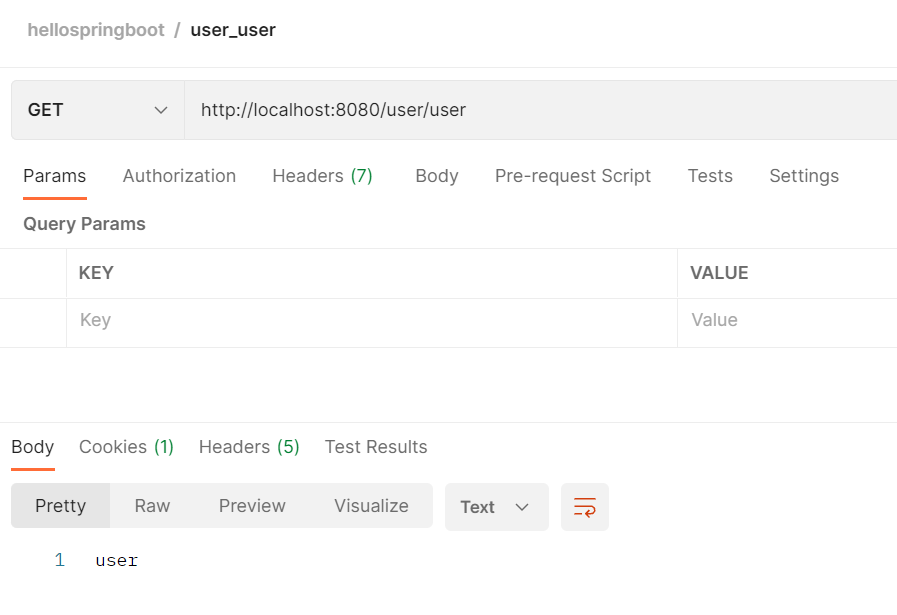
登录admin之后,同时具备admin和user方法的访问权限
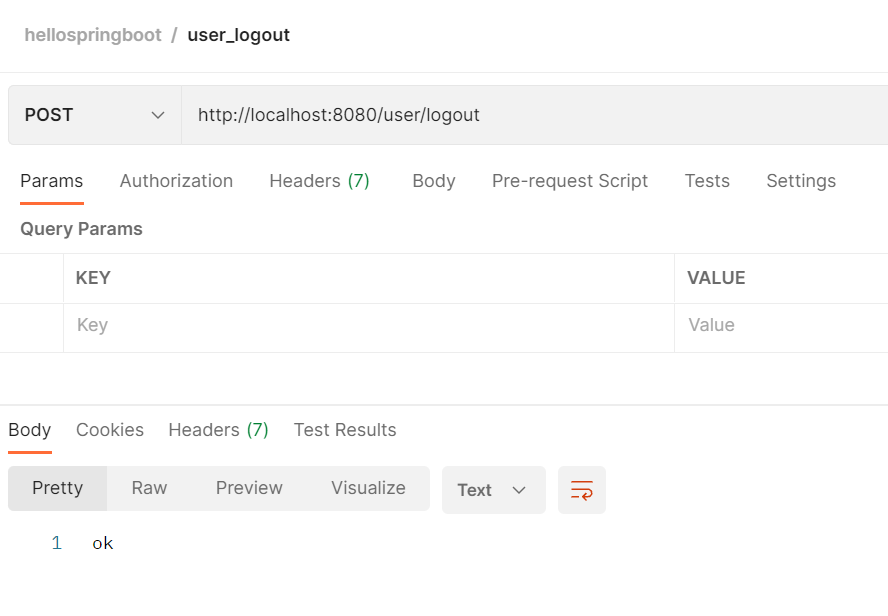
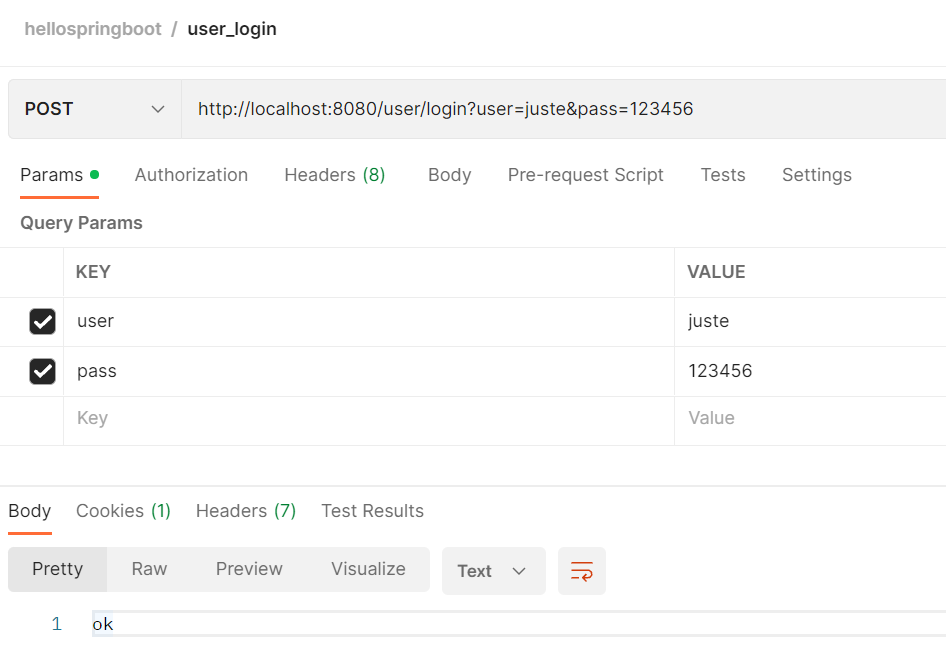

logout登出,然后login登录普通用户juste
会发现依然具备user方法的访问权限,但是失去了admin方法的访问权限
到此,验证我们基于Shiro框架的细粒度权限控制已经实现
除了Shiro框架,我们还有另一个选择,那就是同样可以通过集成Spring Security框架来达成相同的目的
关于更多Shiro框架的内容,及其和Spring Security之间的异同,大家感兴趣可以参考这篇文章:
对于Spring Security框架,我们暂且留个悬念,以后会专门再给大家讲解这部分内容
下一节,我们将把关注点投向微服务领域,SpringCloudAlibaba将会是接下来几个章节的重头戏,敬请期待~
MyAuthorizingRealm
最新文章
- stm32 hid 键盘描述
- 51 NOD 1685 第K大区间2 二分+BIT
- 各种编码中汉字所占字节数;中文字符集编码Unicode ,gb2312 , cp936 ,GBK,GB18030
- 136. Single Number
- oracle学习----行级锁的理解
- 行为树(Behavior Tree)实践(1)– 基本概念
- HttpClient(联网)
- javascript数组(1) ——sort的工作原理及其他数组排序方法
- bzoj 3932: [CQOI2015]任务查询系统
- 使用makecert.exe创建数字证书
- 通过注解配置Bean
- python 机器学习实践入门
- bean生命周期_Junit测试使用factory模式
- wc 命令使用说明
- 删除sql server用户时报15138错误
- SpringCloud之搭建配置中心
- CentOS删除安装的程序
- IWDG—独立看门狗
- linux 命令 htop & 重定向 top, bashrc文件
- 确保web安全的https、确认访问用户身份的认证(第七章、第八章)